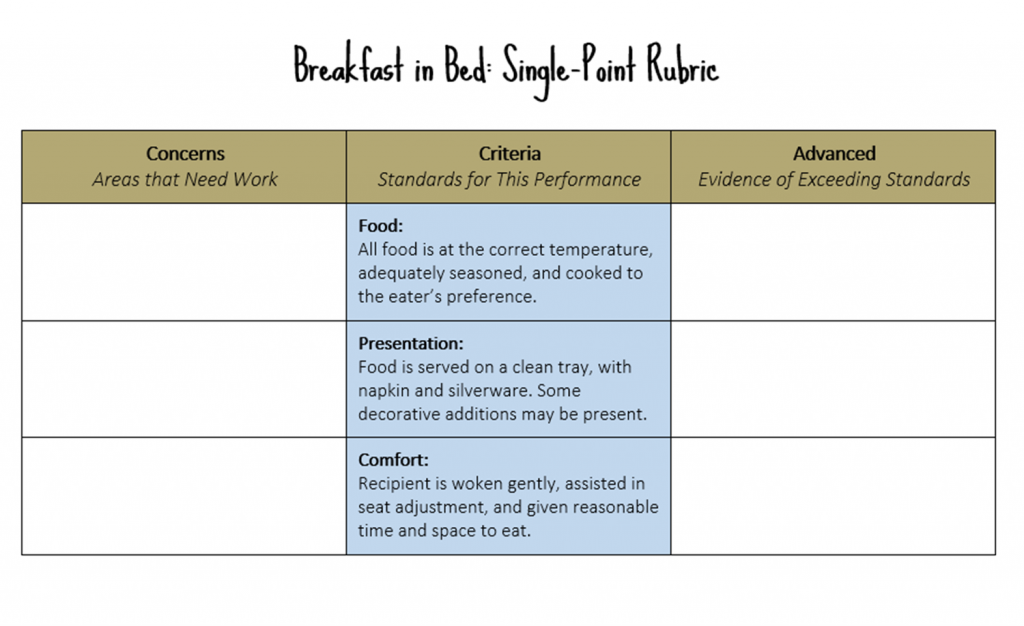Rubrics

Now that we’ve considered the various types of assessments and how to develop them, it’s time to think about scoring them. Rubrics are one of the best ways to score assessments.
Types of Rubrics
Research suggests that students receive the most benefit from learning activities and assessments when they are provided with clear expectations for their performance. In addition to streamlining grading for instructors, rubrics can help students understand the expectations for the assignment and monitor their own performance. Rubrics can also facilitate self and peer assessment. This section will review two main approaches to rubrics: holistic and analytic.
Holistic rubrics
Holistic rubrics provide a single, overall score for performance. View the cards below for more information on the definition, advantages, and disadvantages of holistic rubrics.
Analytic Rubrics
Analytic rubrics provide scores for individual aspects of performance, which can be compiled into a composite score. View the cards below for more information on the definition, advantages, and disadvantages of analytic rubrics.
Let’s look at two samples
Two rubrics are shown below. Click the arrow in the center to view the second rubric.
Rubrics are from Gonzalez, J. (2015, February 4). Meet the Single Point Rubric. Cult of Pedagogy. https://www.cultofpedagogy.com/single-point-rubric/
Anatomy of a rubric
Rubrics contain various elements.
Click on the plus signs to learn more about each part of an analytic rubric.
Sample Rubric Critera
Click the titles in the accordion below to view more information about sample rubric criteria.
Information on this slide adapted from
Creating an Analytic Rubric
Analytic rubrics take some time to develop, but they are a powerful way to provide formative feedback to students. They can also be used for summative assessment if compiled into an overall score.
Click the timeline below to learn the steps of creating an analytic rubric. Click the arrows to navigate through the steps.
Single Point Rubric
A final type of rubric is the single-point rubric. This type of rubric outlines the expectations but provides more open-ended options for sharing feedback. Some instructors prefer this style as it takes less time to create and facilitates more detailed feedback.

